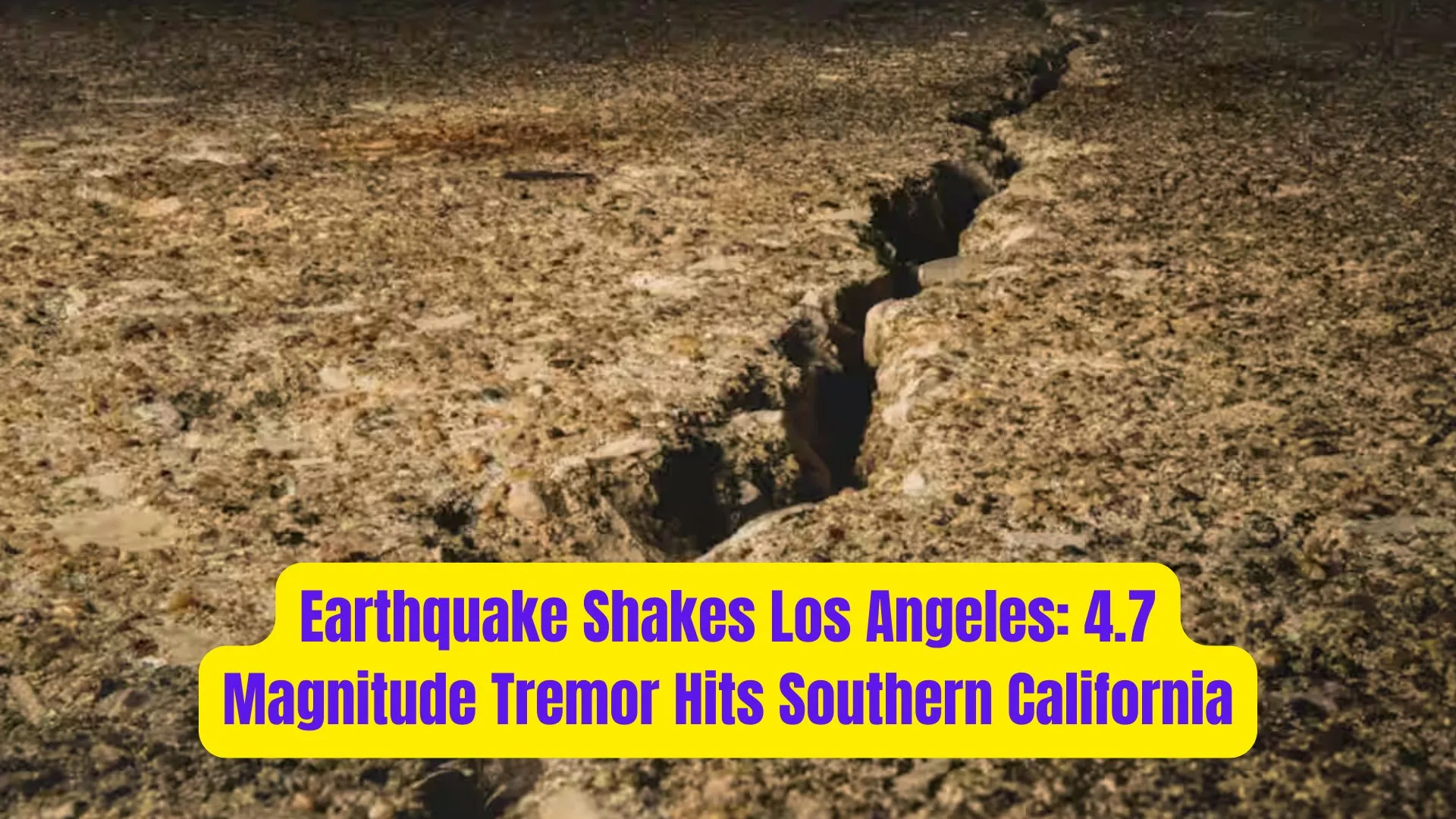Earthquake Shakes Los Angeles: 4.7 Magnitude Tremor Hits Southern California

On a calm Thursday morning, Southern California was rattled by a 4.7 magnitude earthquake, an event that shook many residents out of their daily routines. The earthquake, as reported by the United States Geological Survey (USGS), occurred approximately 4.35 miles north of Malibu and roughly 8 miles from the Los Angeles suburb of Thousand Oaks. Taking place just before 7:30 a.m., the tremor caused significant concern across the region, especially given Southern California’s history of seismic activity.
The Epicenter and Magnitude: A Detailed Breakdown
The epicenter of this recent earthquake was located offshore, which added complexity to the situation. Being so close to Malibu, an area known for its luxurious beach homes and steep cliffs, there was an immediate question of whether the earthquake had triggered landslides or other secondary events. The depth of the quake, registered at approximately 6 miles (10 km) below the surface, was shallow enough to be strongly felt across several counties in Southern California, including Los Angeles and Ventura.
A 4.7 magnitude earthquake is classified as “moderate,” yet it has the potential to cause structural damage, especially in older buildings not retrofitted to withstand such forces. In this case, initial reports indicated minor damage in some areas, although further assessments were being conducted as the day progressed.
Tremors Felt Across the Region
Residents in Los Angeles, Thousand Oaks, Santa Monica, and even as far as Long Beach reported feeling the tremor. Social media was immediately flooded with posts from concerned locals, some sharing that the quake lasted a few seconds but was intense enough to wake them from sleep or cause items to fall from shelves.
In downtown Los Angeles, while no significant damage was reported, the earthquake was enough to disrupt morning commutes, with some transportation services pausing to inspect tracks and ensure safety. It was also noted that several schools and businesses enacted safety protocols, although no major injuries were reported at the time.
Seismic Activity in Southern California: A History of Earthquakes
Southern California sits along the infamous San Andreas Fault, a major fault line that runs through the state. This fault is responsible for some of the most significant earthquakes in U.S. history, including the 1906 San Francisco earthquake and the 1994 Northridge earthquake, which caused widespread damage in the Los Angeles area.
The 4.7 magnitude earthquake is a reminder that the region is constantly at risk for seismic activity. Scientists have long warned of the potential for a major earthquake, often referred to as “The Big One,” which could cause catastrophic damage across California.
Safety Measures: How Southern California Prepares for Earthquakes
Given the frequent earthquakes in the area, Southern California has invested heavily in earthquake preparedness. Many residents are familiar with the “Drop, Cover, and Hold On” technique, a standard safety measure to protect oneself during an earthquake. In recent years, the state has also implemented the ShakeAlert system, an early warning system that sends alerts to residents’ phones when seismic activity is detected.
Local governments and businesses also frequently conduct earthquake drills, ensuring that people know how to respond during a quake. Furthermore, newer buildings are constructed with strict codes that require them to be earthquake-resistant, reducing the likelihood of significant structural damage during moderate tremors.
Emergency Response and Relief Efforts
Following the earthquake, local authorities quickly mobilized to assess the situation. First responders, including fire departments and police, were dispatched to check on vulnerable areas, particularly in Malibu and Thousand Oaks. Fortunately, no severe injuries were reported, although some individuals were treated for minor cuts and bruises from falling debris.
Additionally, power outages were reported in small pockets of the affected area, particularly closer to the epicenter. Utility companies worked swiftly to restore power, and by mid-morning, most areas had regained electricity.
Potential Aftershocks: What to Expect Next
After a significant earthquake, it’s common for the region to experience aftershocks. These are smaller tremors that occur in the same region as the main quake but can still be strong enough to be felt. The USGS warned residents to be prepared for possible aftershocks over the next several days.
While aftershocks are generally weaker than the main earthquake, they can still pose a danger, particularly to structures already weakened by the initial tremor. Residents are advised to inspect their homes and workplaces for any signs of damage and to avoid entering buildings that appear unstable.
The Importance of Earthquake Insurance
For residents of Los Angeles and the surrounding areas, earthquakes are an ever-present threat. Many Californians invest in earthquake insurance, which helps cover the cost of repairs or rebuilding after an earthquake. Standard homeowners’ insurance policies typically do not cover earthquake damage, making specialized insurance crucial for those living in seismically active areas.
Given the moderate size of the 4.7 magnitude earthquake, it is unlikely that extensive insurance claims will follow, but this event serves as a reminder to review policies and ensure coverage is adequate for future seismic activity.
Final Thoughts: A Wake-Up Call for Southern California
The Los Angeles earthquake is a sobering reminder of the seismic risks that come with living in Southern California. While this tremor caused minimal damage, it underscores the importance of preparedness and the need for vigilance in the face of future seismic events.
Residents are urged to keep emergency kits stocked, stay informed through earthquake alerts, and ensure that homes and businesses are up to date with current building codes.

